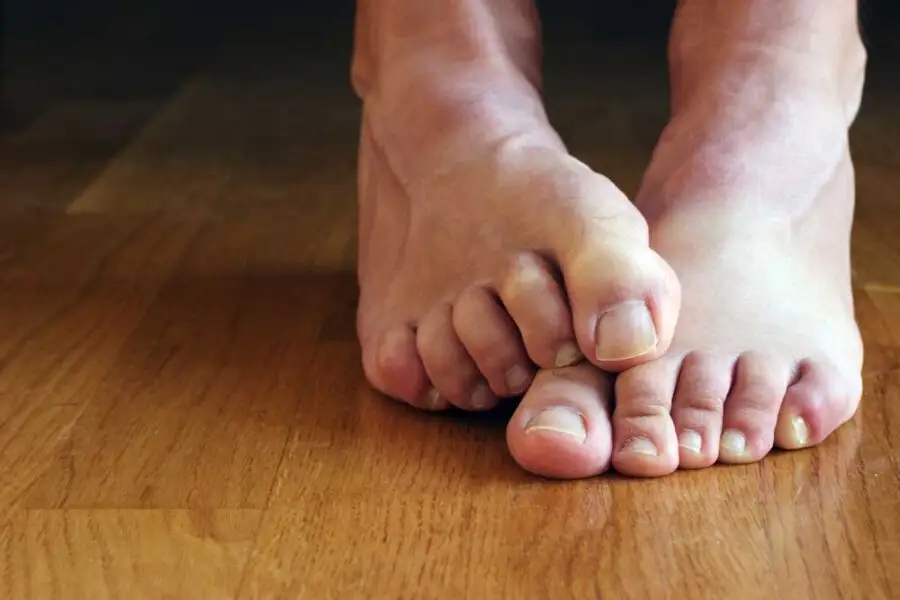
Spring is here – and your feet deserve a fresh start
Spring is back. Lightweight jackets are out again, patios are filling up, and sandals are coming out of storage. But are your feet ready to follow along?
After months of thick socks and tight boots, many are surprised to find cracked heels, thick calluses, nail fungus, or yellowed and thickened toenails. These issues often cause women to hide their feet and avoid sandals or poolside outings.
But it’s time to let your feet step into the light. You’re not alone in feeling embarrassed. And more importantly, real solutions exist. In podiatry, the goal isn’t to hide problems, but to treat them at the root for lasting results.
What winter leaves behind
Winter can be harsh on your feet. Dryness leads to cracked heels. Friction from socks and boots causes thick calluses. Humidity and lack of ventilation promote fungal infections and nail deformities. These conditions are often painful and can worsen if left untreated.
Professional foot care goes beyond appearance
A podiatric treatment is much more than a cosmetic pedicure. It’s a comprehensive approach done in a medical setting. Rather than simply smoothing the surface, the podiatrist targets the root of the problem. The goal is long-term foot health and prevention of recurrence.
The process starts with a full assessment. While cosmetic pedicures focus on appearance, podiatric care treats the cause. It includes safe removal of thick calluses, thinning of deformed toenails, and treatment of fungal infections. Only podiatrists, doctors, and nurses certified in foot care are authorized to use a sterile blade to treat calluses deeply and safely. Here’s how medical foot care works.
Every session comes with personalized advice. From the best moisturizer for your skin type to daily care tips and guidance on avoiding recurrence, the podiatrist provides a full plan. Explore the differences between podiatric care and cosmetic foot care.
Foot shame: still a taboo for many
It’s important to name something many feel but rarely discuss: the shame of showing one’s feet. When dealing with nail issues, fungal infections, or deep cracks, it’s common to feel embarrassed.
This discomfort often leads to avoidance. People hide their feet, delay consultations, or try ineffective home remedies. But podiatrists regularly remind patients: no foot is “too damaged” to be treated. Their role is to help without judgment so you can walk confidently again. Find out how podiatry can restore your confidence.
Why choose a podiatrist over a standard pedicure?
A cosmetic pedicure may feel relaxing, but it doesn’t replace clinical care. Podiatrists work in a regulated medical environment, with the training to assess infections, manage complications, and ensure safe procedures.
Podiatric foot care is designed to last. It targets the cause, not just the symptom. It restores your foot health, helps prevent relapse, and supports your long-term well-being. See when it’s time to consult a podiatrist.
Frequently Asked Questions About Foot Care
Can a podiatrist remove thick calluses?
Yes, only podiatrists, foot care nurses and doctors are allowed to do this completely, with a sterile blade, in a medical setting. This treatment is painless and removes calluses safely, without the risk of injury or irritation.
Do I need a referral to see a podiatrist?
No referral is required. You can book an appointment directly at a PiedRéseau clinic. Find a location. Many private insurance plans offer partial reimbursement.
I feel embarrassed about my feet. Is this common?
Very common. Many people hesitate to seek help because of how their feet look. Podiatrists offer respectful, professional care. There’s no need to feel ashamed.
Are podiatry services covered by insurance?
In many cases, yes. Podiatry is a private service, but most insurance providers cover part of the cost. Ask your clinic for a receipt for claims.
What’s the difference between a podiatric treatment and a pedicure?
A podiatric visit is a medical procedure done by a trained professional. It treats issues such as fungal nails, cracked heels, thick calluses, or ingrown toenails. A pedicure focuses on appearance and doesn’t treat underlying conditions.
How often should I see a podiatrist?
It depends on your condition. If you are prone to thick nails, calluses, or fungal infections, a follow-up every 2 to 4 months is generally advised. The podiatrist will suggest a personalized plan.
This spring, give your feet the care they truly deserve. If anything in this article sounds familiar, know that podiatric care can make a real difference. It’s not just about aesthetics. It’s about comfort, health, and confidence.
Don’t let embarrassment stop you from enjoying the season. Book an appointment at a PiedRéseau clinic today.